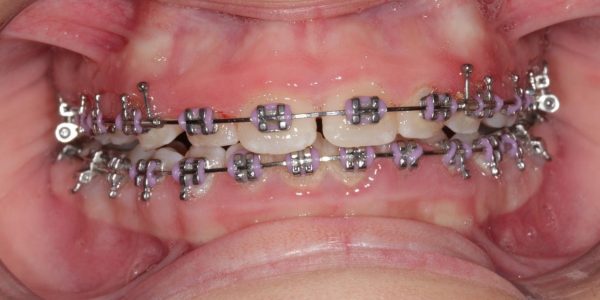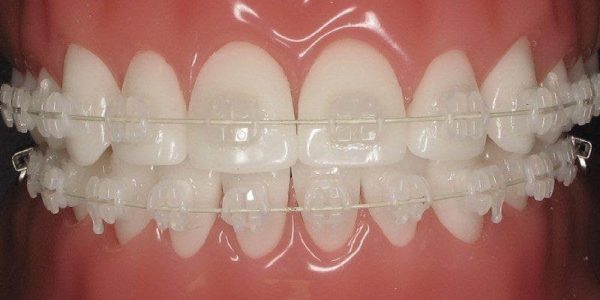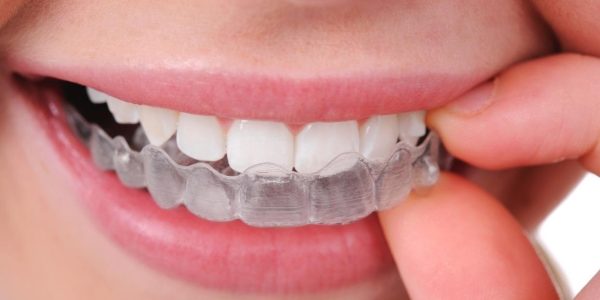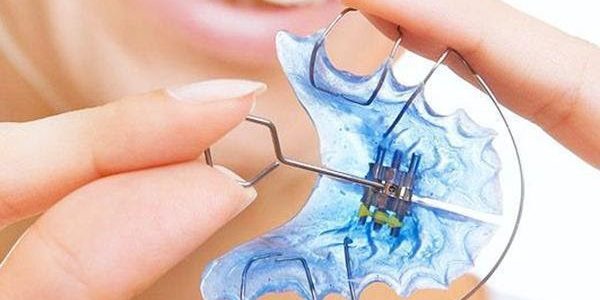Orthodontics is one of the most common dental procedures aimed at correcting the alignment of the teeth and jaws, improving both oral function and appearance.
With technological advancements and the development of materials and techniques, several types of orthodontic treatments have emerged — offering patients multiple options that differ in cost, comfort, and aesthetics.
Orthodontic treatment is used to manage problems such as crowding, spacing, open bite, crossbite, and deep bite, and the orthodontist determines the most suitable type based on the patient’s condition.
Studies indicate that around 70% of people suffer from some degree of tooth or jaw misalignment requiring orthodontic treatment — yet only a small percentage seek it.
This may be due to concerns about the appearance of traditional braces, treatment costs, long duration, or fear of discomfort.
It is important to understand that neglecting alignment issues can lead to worsening oral and gum health, and difficulties with chewing and speech.
The Functional and Aesthetic Importance of Orthodontics
Orthodontic treatment improves essential oral functions such as chewing and speech, and helps prevent future problems like tooth decay and gum disease caused by food accumulation in irregular spaces between teeth.
Moreover, improving the appearance of teeth boosts self-confidence and positively impacts social and professional life, especially during adolescence.
Orthodontics is not only a cosmetic procedure — it’s a therapeutic and preventive treatment that helps distribute biting forces evenly across the teeth.
A Brief Historical Overview
The use of orthodontic appliances dates back centuries, with early civilizations such as the Egyptians and Greeks using simple tools to correct tooth alignment.
In the 19th century, orthodontics began to take shape scientifically with the invention of wires and brackets.
Over time, materials and techniques evolved — leading to clear aligners, digital orthodontics, and even AI-powered systems that provide more accurate diagnoses and faster, more comfortable results for patients.
Types of Orthodontic Treatment
1. Fixed Metal Braces
Fixed metal braces are the most common and effective type for treating complex alignment problems. They apply continuous, controlled forces to move teeth precisely into the desired position.
This treatment requires regular visits to the orthodontist for adjustments of the brackets and archwires. This is the most widely used orthodontic system and is preferred by most orthodontists because it delivers the best results in the shortest time.
The appliance consists of metal brackets bonded to each tooth with dental adhesive and connected by a metal archwire held in place with elastic ligatures.
Drawback: The metallic appearance is quite noticeable, which makes it less appealing, especially for adults.

2. Fixed Ceramic Braces
Ceramic braces work the same way as metal braces but use tooth-colored or clear ceramic brackets, making them less visible and more aesthetically pleasing.
This type provides the same effectiveness and ease of use as metal braces but is preferred by adults for its natural tooth-like color.
Its disadvantages higher cost compared to metal braces, and Ceramic brackets are more fragile and may need rebonding if broken.

3. Clear Removable Aligners
Clear aligners have become very popular recently due to their ease of use and aesthetic appearance. They consist of transparent, removable plastic trays custom-made for each patient using CAD/CAM technology.
They are worn throughout the day and can be removed for eating and oral hygiene. Clear aligners are suitable for mild to moderate cases of misalignment but are not recommended for severe or complex orthodontic issues.
Its disadvantages treatment duration can be longer than traditional braces, require strict patient compliance (around 22 hours per day), and when handled by a non-specialist dentists, the results may be unsatisfactory or lead to treatment failure.
Common brands: Invisalign, ClearCorrect.

4. Lingual Braces (Internal Braces)
Lingual braces are similar in design to traditional metal braces, using metal brackets and wires, but they are attached to the inner (lingual) surface of the teeth — making them completely invisible from the outside.
They provide excellent results and aesthetic advantages but are more expensive, harder to install, and require specialized training.
Its drawbacks that may cause temporary tongue irritation and speech difficulties, limited availability of materials and fewer trained specialists, and usually requires an extra year of specialized training after orthodontic residency.

5. Removable Metal Braces
This is the least common and least used type of orthodontic treatment. Despite being inexpensive and easy to use, it is generally unpopular among patients and orthodontists. It is typically used for minor or temporary corrections.
Its disadvantages less effective and less precise results, longer treatment time, and unattractive appearance and reduced comfort, especially for adults.

6. Self-Ligating Braces (Smart Brackets)
Self-ligating brackets do not require elastic ties. They use built-in clips to hold the wire, reducing friction and speeding up tooth movement.
Its advantages has fewer adjustment visits, greater comfort, and easier to maintain oral hygiene.
But its disadvantages only higher cost than conventional braces.
7. Preventive Orthodontics for Children
Used at an early age to guide jaw and tooth growth, often preventing the need for braces later on.
These devices may include habit-breaking appliances to stop thumb-sucking or tongue-thrusting.
8. Palatal Expanders (Jaw Expansion Devices)
Used to widen the upper jaw in cases of jaw constriction — especially in children — helping to create more space and reduce crowding in the future.
Modern Orthodontic Technologies
1- Digital Orthodontics
Digital orthodontics uses 3D imaging and digital treatment planning software to design a precise treatment plan. It allows simulation of treatment outcomes before starting, saving time and improving accuracy.
2- Propel Technology for Faster Treatment
The Propel system stimulates the bone surrounding the teeth using micro-pulses or micro-perforations, accelerating tooth movement and reducing treatment time — sometimes by half.
3- Remote Clear Orthodontic Monitoring
With this system, patients can send periodic photos of their teeth via mobile apps for virtual checkups, minimizing in-office visits — ideal for busy individuals or frequent travelers.
4- Artificial Intelligence in Treatment Planning
AI analyzes patient data and generates personalized treatment plans with high precision, improving results and minimizing human error.
Guide to Choosing the Right Type of Orthodontic Treatment
By Age:
- Children: Preventive orthodontics, expansion appliances.
- Teenagers: Any type depending on the case.
- Adults: Prefer clear aligners or lingual braces for aesthetic reasons.
By Case Complexity:
- Mild misalignment: Clear or removable aligners.
- Complex bite problems: Metal, ceramic, or lingual braces.
By Budget:
- Limited: Traditional metal braces.
- Moderate to high: Ceramic, clear, or lingual braces.
By Aesthetic Preference:
- Appearance-focused: Clear or lingual braces.
- Less concerned with aesthetics: Traditional metal braces.
After Orthodontic Treatment
At the end of orthodontic treatment, a retainer is used to maintain the teeth in their new positions and ensure they stay aligned with the facial and jaw structure. Retainers can be fixed or removable, depending on the initial condition of the teeth before treatment.
A beautiful smile requires well-aligned teeth free from irregularities — which is why choosing the most suitable type of orthodontic treatment is essential for your face and dental harmony.
Conclusion
Orthodontic treatment is a vital step toward improving both oral health and aesthetic appearance. With the wide variety of orthodontic systems and modern technologies available today, every patient can find the option that best suits their needs.
It is always recommended to visit qualified orthodontic specialists for an accurate assessment and personalized treatment plan.
Don’t delay addressing misalignment issues — restore your confident smile and begin your journey with Wonders Dentistry today. Book your consultation now.








